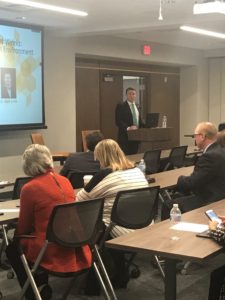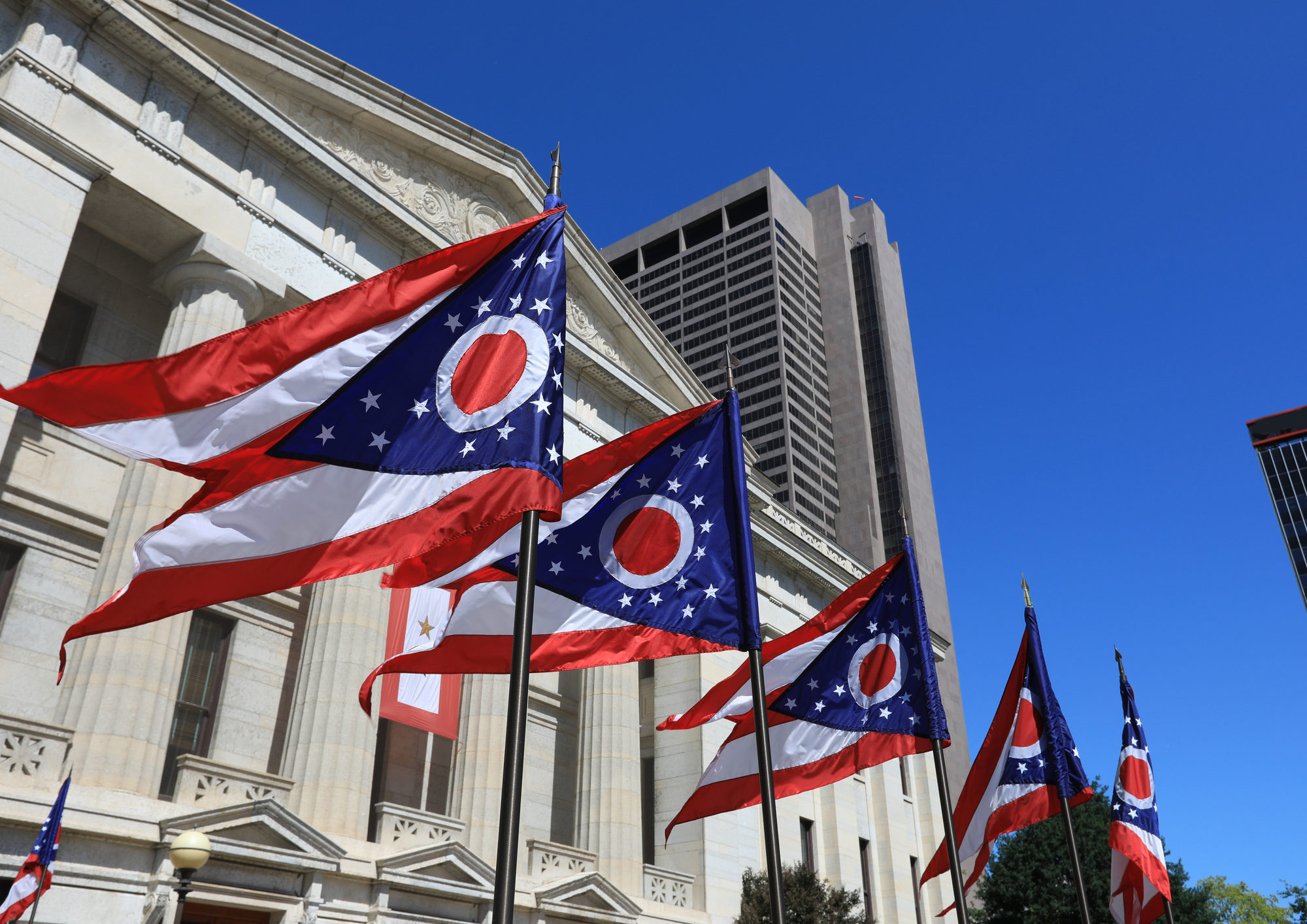With 2018 being a pivotal mid-term election year, the Ohio Chamber has been offering several opportunities for its members to meet new candidates for office and learn more about this year’s unique political landscape.
To that end, several expert presenters joined our Public Affairs Committee Tuesday to discuss the current political environment in Ohio and nationally, provide analysis into specific races for the Ohio General Assembly, and short-term and long-term policy priorities.

First was a panel discussion on the 2018 election environment featuring Dr. Herb Asher, Professor Emeritus at The Ohio State University and Dr. Mark Caleb Smith, Director of Cedarville University’s Center for Political Studies. The panelists discussed topics that ranged from interpreting the tea-leaves from last month’s closer-than-anticipated special election in the 12th Congressional District, if the Trump Coalition would help Republicans keep their existing majorities in Congress, and Ohio’s importance in presidential contests given our state’s changing demographics.
Joining us from the U.S. Chamber’s Great Lakes Region office in Chicago was Kevin Courtois. Kevin discussed some victories in Congress this session that are benefiting American businesses and helping grow the U.S. economy, along with some other key issues the U.S. Chamber will be prioritizing in the coming months. Among others, these topics included tariffs and tax reform 2.0.

Rounding out our election-related agenda, the political directors for the four Ohio House & Senate caucuses squared off in an interesting discussion about this year’s battles for the Ohio legislature. They highlighted key races and candidates and how they would define success in November this year.
For both the House and Senate Republicans, success looks like either maintaining their sizable majorities or minimizing losses, while success for the House Democrats will be measured by whether or not they can prevent the Republicans from retaining their veto-proof House majority – which would require a net gain of at least seven seats. For Senate Democrats, successfully chipping away at the current, historically wide 24-9 GOP majority is the primary goal, though playing defense in the Mahoning Valley where the race to replace outgoing Democrat Sen. Joe Schiavoni with Rep. John Boccieri will be a priority. Another key take-away is that the most competitive races for both chambers are likely to be in open-seat suburban districts, in which most of the current officeholders are Republicans.
Though it’s hard to believe that we are only 54 days away from the election and only a few months away from swearing in a new General Assembly and a new governor, 54 days in politics is a long time. At least now our members have a better perspective on just what to look for as November 6 draws ever-nearer.
